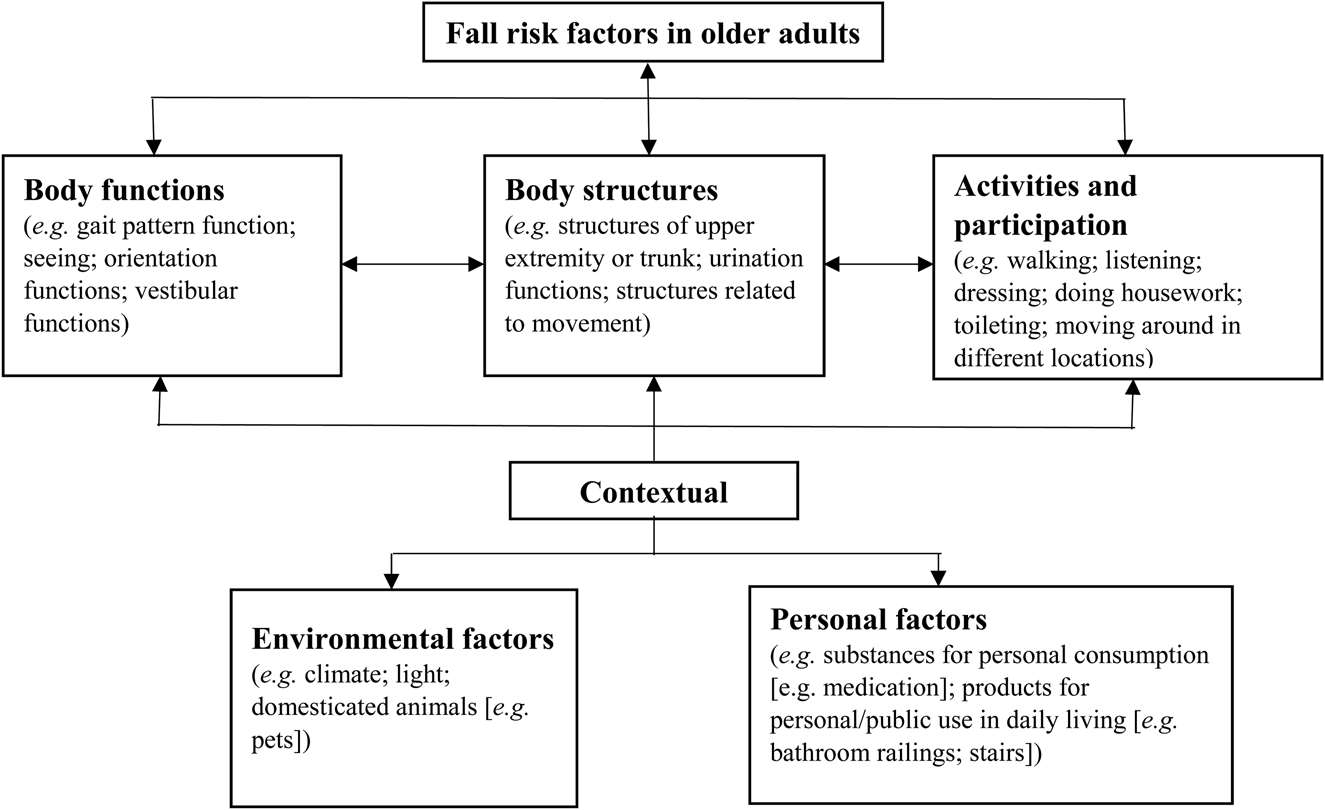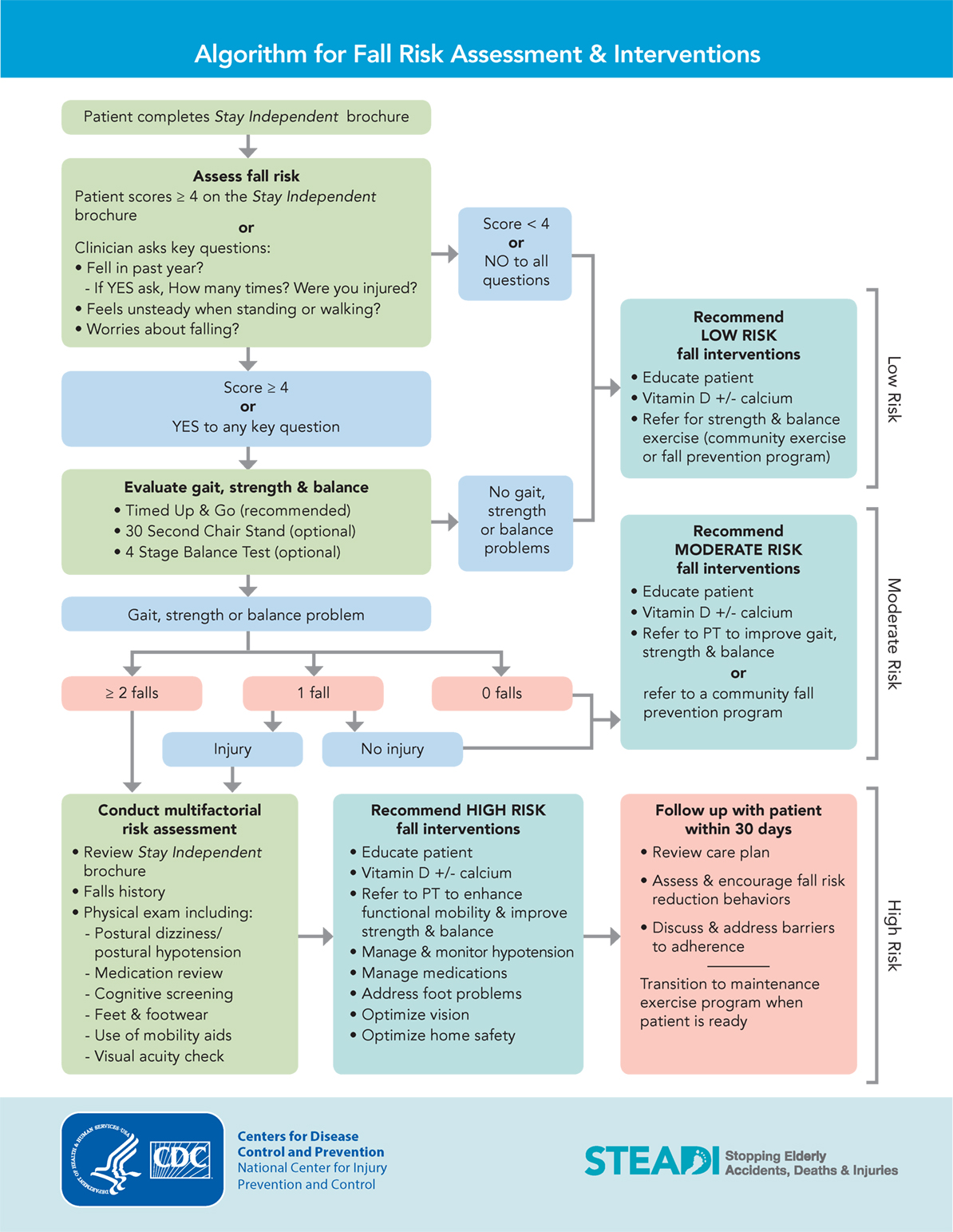Everything about Dementia Fall Risk
Everything about Dementia Fall Risk
Blog Article
5 Easy Facts About Dementia Fall Risk Described
Table of ContentsThe 7-Minute Rule for Dementia Fall RiskDementia Fall Risk Things To Know Before You BuyWhat Does Dementia Fall Risk Mean?The Single Strategy To Use For Dementia Fall Risk
A loss danger assessment checks to see exactly how most likely it is that you will drop. The evaluation generally includes: This includes a collection of questions about your general wellness and if you have actually had previous falls or problems with balance, standing, and/or strolling.Interventions are recommendations that may lower your danger of falling. STEADI includes 3 actions: you for your danger of falling for your risk factors that can be improved to attempt to avoid drops (for instance, equilibrium issues, impaired vision) to decrease your threat of dropping by utilizing efficient techniques (for instance, offering education and sources), you may be asked a number of questions including: Have you dropped in the past year? Are you fretted about dropping?
If it takes you 12 secs or even more, it might indicate you are at greater risk for a loss. This examination checks stamina and balance.
The placements will obtain more difficult as you go. Stand with your feet side-by-side. Relocate one foot halfway ahead, so the instep is touching the big toe of your various other foot. Move one foot completely in front of the various other, so the toes are touching the heel of your various other foot.
The Dementia Fall Risk Diaries
A lot of falls take place as an outcome of numerous adding elements; as a result, taking care of the threat of dropping starts with recognizing the variables that add to fall risk - Dementia Fall Risk. Some of one of the most pertinent threat variables consist of: Background of previous fallsChronic medical conditionsAcute illnessImpaired stride and equilibrium, reduced extremity weaknessCognitive impairmentChanges in visionCertain risky medications and polypharmacyEnvironmental variables can additionally boost the danger for falls, including: Poor lightingUneven or harmed flooringWet or unsafe floorsMissing or damaged handrails and get barsDamaged or improperly fitted tools, such as beds, wheelchairs, or walkersImproper use assistive devicesInadequate supervision of individuals residing in the NF, including those that display aggressive behaviorsA successful fall threat monitoring program requires a comprehensive clinical assessment, with input from all participants of the interdisciplinary team

The care strategy need to also consist of interventions that are system-based, such as those that advertise a secure atmosphere (appropriate illumination, handrails, order bars, etc). The performance of the treatments ought visit the site to be examined periodically, and the treatment plan modified as needed to show changes in the autumn risk analysis. Applying a fall danger administration system utilizing evidence-based best practice can lower the prevalence of falls in the NF, while restricting the capacity for fall-related injuries.
The Of Dementia Fall Risk
The AGS/BGS standard suggests screening all adults aged 65 years and older for autumn threat each year. This screening contains asking people whether they have actually fallen 2 or more times in the past year or sought medical focus for a fall, or, if they have not fallen, whether they feel unstable when walking.
People that have actually dropped when without injury must have their balance and stride assessed; those with stride or equilibrium abnormalities should receive extra evaluation. A background of 1 autumn without injury and without gait or equilibrium troubles does not necessitate click now additional analysis beyond continued yearly loss risk testing. Dementia Fall Risk. A loss risk evaluation is needed as part of the Welcome to Medicare examination

Dementia Fall Risk for Dummies
Documenting a falls background is one of the top quality signs for autumn avoidance and management. copyright drugs in particular are independent forecasters of drops.
Postural hypotension can commonly be alleviated by minimizing the dosage of blood pressurelowering medicines and/or quiting drugs that have orthostatic hypotension as a negative effects. Use of above-the-knee support pipe and sleeping with the head of the bed raised might additionally decrease postural decreases in blood stress. The recommended aspects of a fall-focused physical exam are displayed in Box 1.

A yank time higher than or equal to 12 secs suggests high fall threat. The 30-Second Chair Stand test analyzes lower extremity strength and balance. Being incapable to stand up from a chair of knee height without utilizing one's arms indicates boosted autumn danger. The 4-Stage Balance test assesses static balance by having the client stand in 4 placements, each gradually extra challenging.
Report this page